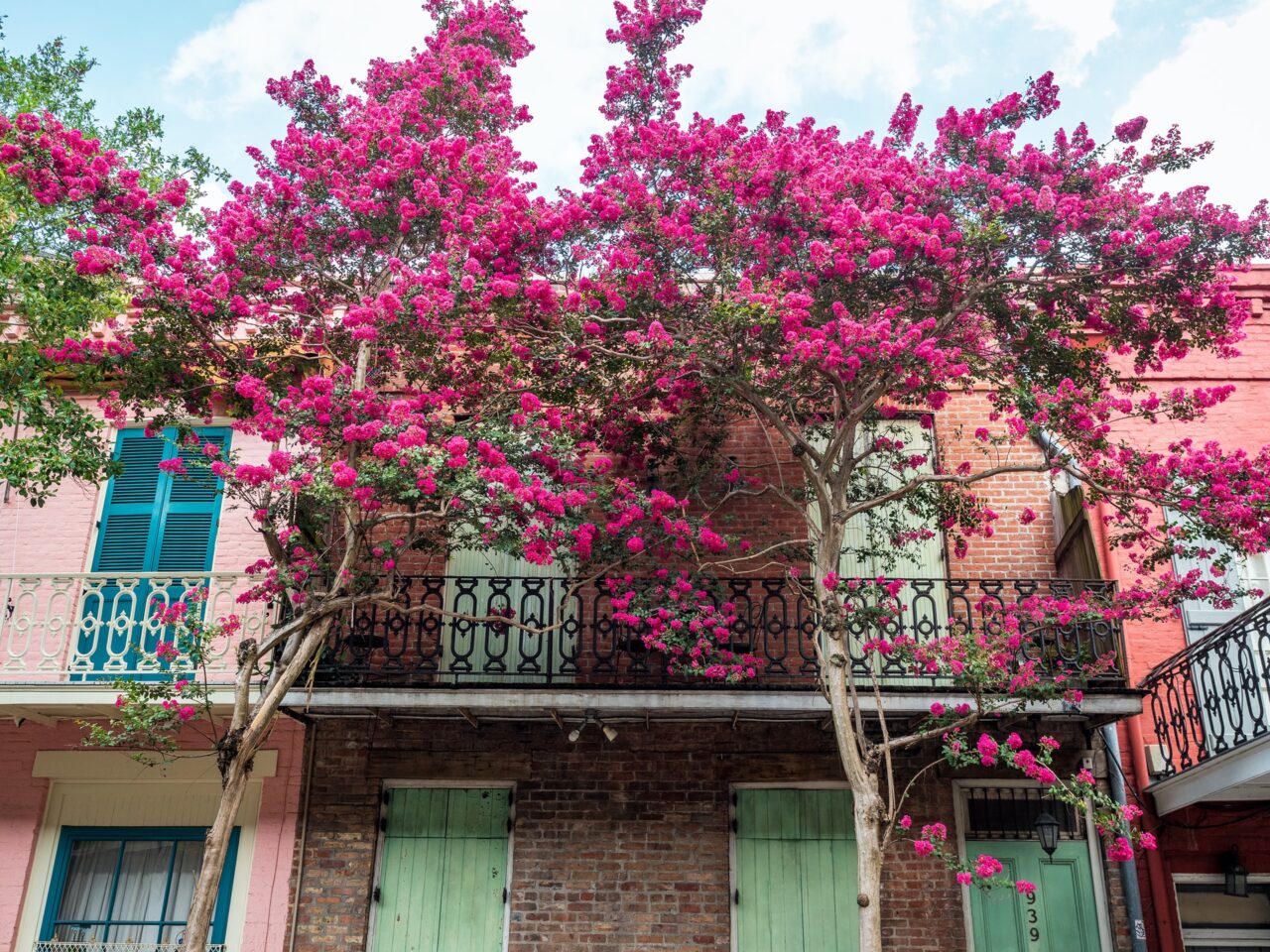By Marion Law
The stunning crepe myrtle (Lagerstroemia indica), is one of the most popular flowering plants in the southern United States. The crepe myrtle is often referred to as the “Lilac of the South,” due to its clusters of large, drooping blooms, a scent highly reminiscent of lilacs.
These dramatic blossoms come in various hues – from multiple shades of pink to red, white, and vivid purple. Surprisingly, these hardy blooms can last up to 100 days. When the flowers are not in season, they are replaced with heavy seed pods, creating a drooping or “weeping” effect.
The crepe myrtle also boasts fabulous fall colors, in addition to a patterned, colorful attractive bark. The leaves turn from a gorgeous red in spring to a lustrous dark green in summer. The crepe myrtles of the Tampa Bay area boast yellow, red, and orange leaves in the autumn.
This wonderful shrub can range from six to twenty-five feet in height and is known to be relatively disease and pest free.
Planting crepe myrtle
Crepe myrtles thrive in full sun and require eight hours of direct sunlight on a daily basis for optimum growth and vitality. It’s wise to check the sun patterns on the property to determine the best location for planting the shrub. If you desire a particular color, it’s best to buy your crepe myrtle when blooming, to be sure it’s the one you want.
If planting a crepe myrtle grown in a container, early summer is best, since this is the shrub’s natural active growth period. Burlapped plants also need eight hours of full sun and should be planted while dormant, in well-drained soil, far from seawalls and other seaside locations. Crepe myrtles require mildly acidic soils, with a pH level of 6 to 6.5.
Watering crepe myrtles
Mature crepe myrtles are extremely drought resistant, have low fertility requirements, and can thrive for a month with no irrigation.
When a crepe myrtle is newly planted it’s imperative to water it regularly for the first three weeks. This initial irrigation will help establish a strong root system.
Once the root system is properly established, watering every two weeks should suffice, although regular irrigation will result in lush blooms and lustrous greenery.
Caring for crepe myrtle
When a crepe myrtle is freshly planted, it requires up to three fertilizations within the first year. This will stimulate healthy growth in a young shrub.
Once the tree has matured, it needs minimal fertilizing, and if planted in the middle of a yard, will draw its nutrients from the lawn’s fertilization. If the mature crepe myrtle tree is planted away from the lawn, it will need to be fertilized once every spring.
To conserve moisture, reduce weeds, and insulate roots against soaring temperatures, mulching your crepe myrtle is advised. A three to a five-inch layer of mulch surrounding the tree should bring optimum, protective results, and the mulching area should be larger than the planting hole.
Insects, such as aphids are a huge issue and can cause a discoloring sooty mold on your crepe myrtle tree. Infestations can be avoided with the application of aphid and mold-resistant cultivar. Always follow the instructions for pesticides with precision, and your crepe myrtles will bloom and blossom with vigor.
Pruning crepe myrtle
Crepe myrtles don’t generally need annual pruning, although certain situations will require some trimming. Removal of suckers, crossing branches, clearing growth away from pathways and structures, or dead and damaged branches may necessitate some pruning. If any of these situations arise, late winter is by far the best time to prune.
If crepe myrtles are being pruned to allow sunlight into the canopy, the gardener should maintain the integrity and natural shape of the tree. The top of the crepe myrtle should always be left intact, or it could permanently damage your tree. This drastic pruning method is referred to as “topping,” and can induce heavy growth that inhibits sunlight, and increases vulnerability to insects and disease.
It is wise to consult a professional tree pruning service before attempting any pruning of your beloved crepe myrtle tree.
Featured photo by Mary Hammel



